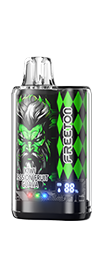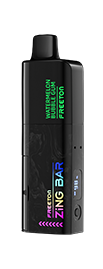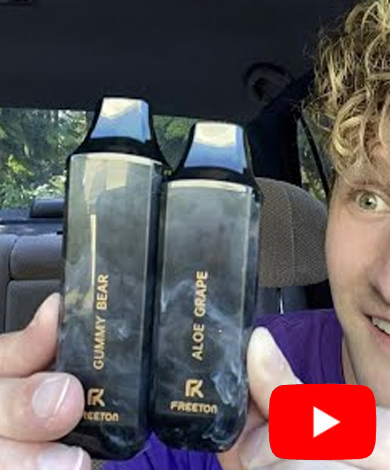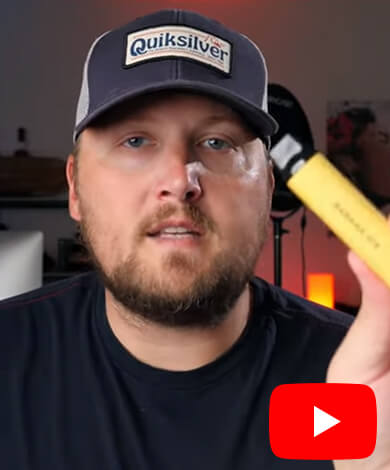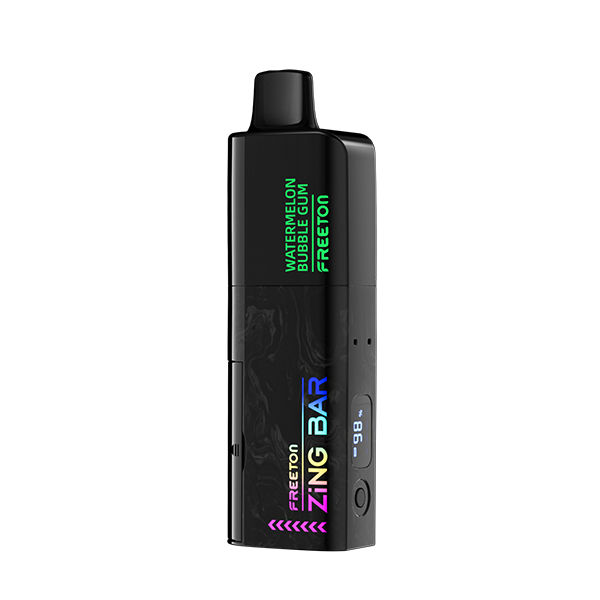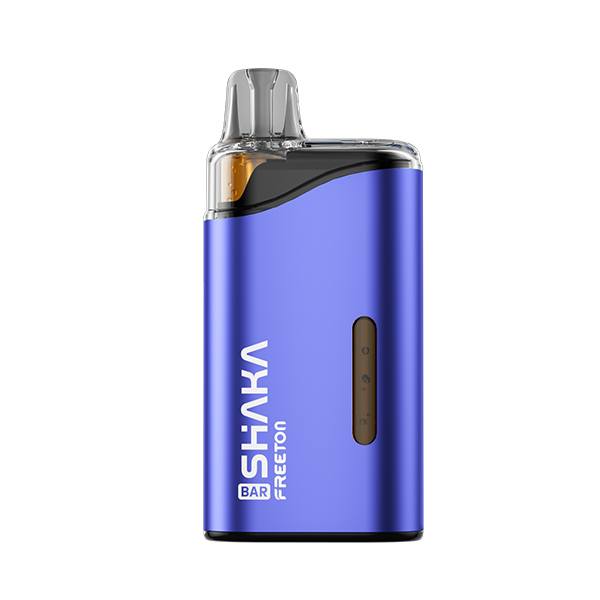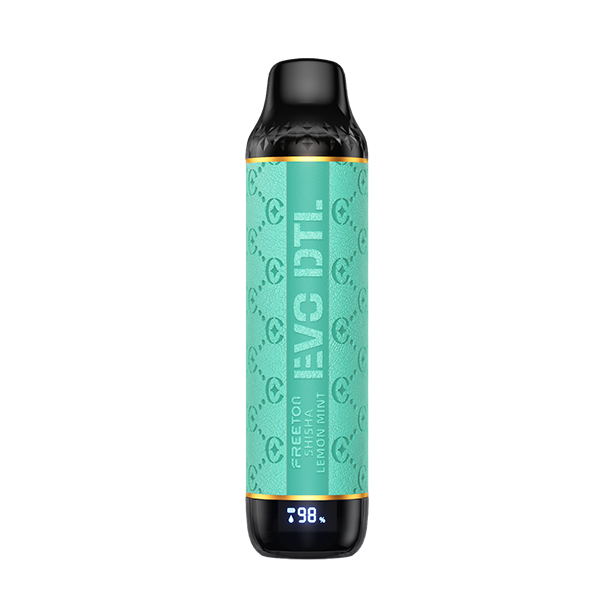
Introduction The rise of disposable vapes has marked a significant shift in the smoking and vaping industry, appealing to users with their convenience, variety of flavors, and ease of use. These devices, designed for short-term use, have surged in popularity among both seasoned smokers looking to transition away from traditional cigarettes and new users drawn […]
Introduction
The rise of disposable vapes has marked a significant shift in the smoking and vaping industry, appealing to users with their convenience, variety of flavors, and ease of use. These devices, designed for short-term use, have surged in popularity among both seasoned smokers looking to transition away from traditional cigarettes and new users drawn by the discreet form factor and user-friendly design. However, this surge has brought to light a pressing issue: disposable vapes often die before their expected end, leaving users frustrated and contributing to increased waste.
The core of this problem lies in the very nature of disposable vapes—meant to be used and then discarded. Yet, many users find themselves seeking ways on how to make a disposable vape work after it dies, driven by a desire to extend the life of their device, reduce waste, or simply get the most out of their investment. This challenge has sparked a wave of interest in reviving these seemingly lifeless devices, pushing users and enthusiasts to explore and share innovative solutions.
Understanding the intricacies of disposable vapes—how they function, why they sometimes fall short of their promised lifespan, and what can be done to mitigate these issues—is crucial. This guide aims to delve deep into the world of disposable vapes, offering insights into their components, the reasons behind their premature demise, and, most importantly, providing a detailed, step-by-step guide on how to make a disposable vape work after it dies. Through expert advice and practical tips, this article will empower users to breathe new life into their devices, challenging the throwaway culture and promoting a more sustainable approach to vaping.

Understanding Disposable Vapes
Disposable vapes are ingeniously designed devices that cater to the needs of vapers seeking convenience without the commitment required by rechargeable systems. At their core, these devices consist of four main components: a battery, e-liquid, coil, and mouthpiece. Each part plays a pivotal role in delivering the vapor that users inhale, working in harmony to provide a seamless vaping experience.
The battery is the heartbeat of the disposable vape, supplying the necessary power to heat the coil. The e-liquid, stored within the device, contains a mixture of nicotine, flavorings, and a base (usually propylene glycol and/or vegetable glycerin), which is vaporized upon heating. The coil is the heating element that transforms the e-liquid into vapor, while the mouthpiece is where the user inhales the produced vapor.
Disposable vapes are designed with a specific lifespan in mind, usually determined by the e-liquid capacity or the battery's charge. Most devices are meant to last until the e-liquid runs out, typically offering between 200 and 1500 puffs, depending on the model and brand. This design underscores the devices' intended use: to provide a finite vaping experience with no need for refilling or recharging.
However, the simplicity of disposable vapes also introduces limitations. The non-rechargeable nature of their batteries and the closed system that prevents refilling mean that once a component fails or the e-liquid is depleted, the entire device is rendered useless. This design, while convenient, raises questions about sustainability and value, driving users to seek methods on how to make a disposable vape work after it dies, in hopes of extending their utility beyond the initial design constraints.
By understanding these fundamental aspects of disposable vapes, users can better navigate the challenges they face when their device prematurely ceases to function, setting the stage for exploring solutions to revive and potentially extend the life of their disposable vape.
Why Disposable Vapes Die Prematurely
Disposable vapes, despite their convenience and growing popularity, are not without their faults, often ceasing to function before their expected end. The premature death of these devices can usually be attributed to a few common reasons: battery depletion, e-liquid running out, or coil burnout. Understanding these underlying issues is crucial for anyone looking to revive their device or simply to get the most out of it.
Battery Depletion
The most common issue leading to a disposable vape's early demise is battery depletion. Since these devices are equipped with a non-rechargeable battery designed to last just until the e-liquid is used up, any miscalculation in battery capacity or usage can lead to the device dying prematurely. In some cases, the battery may run out before the e-liquid, leaving users searching for ways on how to make a disposable vape work after it dies.
E-Liquid Running Out
Another factor is the depletion of e-liquid. Some users may experience their vape's flavor diminishing or the device producing less vapor, indicating the e-liquid is running low. This situation is exacerbated if the device was left unused for an extended period, leading to e-liquid evaporation or leakage, which reduces its lifespan.
Coil Burnout
Coil burnout is a less common but significant issue that affects the longevity of disposable vapes. The coil, responsible for heating the e-liquid to produce vapor, can become overused or damaged, especially if the device is used more intensely than it was designed for. This can result in a burnt taste or, in some cases, the device ceasing to produce vapor altogether.
The Environmental Impact
Aside from the inconvenience of having a vape die prematurely, there's a significant environmental concern. The throwaway nature of these devices contributes to electronic waste, as the batteries and electronic components of disposable vapes pose a disposal challenge. This environmental impact has led to increased scrutiny of disposable vapes and a push for more sustainable vaping practices.
Understanding these reasons behind the premature death of disposable vapes sets the stage for exploring solutions and techniques to revive them. It not only allows users to potentially extend the life of their devices but also contributes to a broader conversation about sustainability and responsible consumption in the vaping community.
How to Make a Disposable Vape Work After It Dies
Reviving a disposable vape after it has seemingly met its end is a process that requires careful consideration and a basic understanding of the device's workings. Before proceeding with any attempts to make your disposable vape work again, it's crucial to perform some preliminary checks to ensure the device is actually dead and not just temporarily malfunctioning.
Preliminary Checks
- Check the Battery Connection: Sometimes, the issue may be as simple as a loose connection between the battery and the heating element. Gently tapping or adjusting the device can sometimes restore this connection.
- Inspect for Blockages: Ensure that the airway is not blocked. A clogged mouthpiece can prevent vapor from being inhaled, simulating a dead vape.
- Visual Inspection: Look for any visible signs of damage or leakage. If the device is physically damaged, it may be unsafe to attempt reviving it.
Step-by-Step Guide to Troubleshooting Common Issues
Once you've performed the preliminary checks and determined that your disposable vape is indeed dead, follow these steps to troubleshoot and potentially revive your device:
- Gently Clean the Device: Use a cotton swab lightly dipped in isopropyl alcohol to clean the mouthpiece and any accessible parts of the device. This can help clear out any residue that might be causing a blockage.
- Warm Up the Device: Sometimes, the e-liquid can become too viscous, especially in cold environments, preventing it from properly wicking. Gently warming the device in your hands or by placing it in a warm (not hot) environment for a few minutes can help.
- Try a Few Dry Puffs: If the battery isn't completely depleted, taking a few gentle puffs without activating the battery (if possible) can help draw the e-liquid into the coil, potentially kick-starting the vapor production process.
- Shake the Device: Gently shaking the device can help redistribute the e-liquid, ensuring the wick is adequately saturated.
It's important to note that attempting to revive a disposable vape, especially by tampering with the battery, carries inherent risks. Batteries in disposable vapes are not designed for recharging, and attempting to do so without proper knowledge and precautions can lead to injury or damage. Always prioritize safety and consider the potential risks before attempting to fix a dead disposable vape.
This guide aims to offer insights into how to make a disposable vape work after it dies, focusing on safe and practical steps users can take. However, it's crucial to approach this process with caution and to consider the environmental implications of disposable vape use.
Reviving the Battery
Attempting to revive the battery of a disposable vape is a delicate process that comes with significant risks, as these batteries are not designed to be recharged or tampered with. Before attempting any form of battery revival, it's imperative to understand the potential hazards, including the risk of battery leakage, explosion, or fire. Therefore, the following techniques are provided with a strong disclaimer about these risks, and they should only be considered as a last resort after all safer methods have failed.
Techniques to Safely Recharge a Non-Rechargeable Vape Battery
- Disclaimer: This section involves methods that are not recommended by manufacturers and can void warranties, potentially violate local laws, and, most importantly, pose serious safety risks. Proceed with extreme caution and at your own risk.
- USB Method: Some users have attempted to revive disposable vape batteries by carefully attaching wires from a USB cable to the battery contacts. This method requires identifying the positive and negative terminals of the battery and connecting them to the corresponding wires of a cut USB cable. The battery should only be connected to a power source for a short period to minimize the risk of overheating.
- External Battery Chargers: Specialty chargers exist that can charge batteries with variable voltage settings. Using such a charger allows for a controlled charge that minimizes risks. However, finding the correct charger that fits the specific battery type of a disposable vape can be challenging and not guaranteed to be safe.
Signs That the Battery Can No Longer Be Revived
- No Response After Charging Attempt: If the device shows no signs of life after a careful and short attempt to charge, the battery is likely beyond revival.
- Physical Damage or Leakage: Any signs of swelling, leakage, or damage to the battery indicate that it is unsafe to continue attempts at revival.
- Overheating During Charging: Batteries that become hot to the touch during attempted charging are at a high risk of failure or explosion and should not be used.
Important Safety Note: It is crucial to understand that tampering with lithium batteries can lead to dangerous chemical reactions. The advice provided here is not a recommendation to undertake these actions, which should only be considered with the utmost caution and understanding of the risks involved. The safest and most environmentally friendly option when a disposable vape dies is to dispose of it properly according to local regulations and consider switching to a rechargeable vaping device.
Refilling E-Liquid and Fixing Coil Issues
Reviving your disposable vape often involves addressing the e-liquid level or coil condition. While not all disposable vapes are designed to be opened or refilled, some users find creative ways to bypass these limitations. It's important to proceed with caution, as improperly handling the device could lead to damage or personal injury.
Instructions on How to Safely Open the Vape (if Possible) and Refill E-Liquid
- Identify the Opening Mechanism: Most disposable vapes are sealed units, but some may have a removable mouthpiece or other parts that allow access to the internal tank. Carefully examine the device to see if there's a non-destructive way to open it.
- Refilling the E-Liquid: If you've managed to access the tank, use a syringe or dropper to refill the e-liquid. Be careful not to overfill, as this could cause leakage or damage to the coil. Only use e-liquid that is compatible with your device’s coil resistance.
Tips for Dealing with Coil Burnout or Clogs
- Cleaning the Coil: If the coil is clogged, you can try gently cleaning it with a dry cotton swab. This can sometimes remove enough residue to restore vapor production. However, this method has limited effectiveness if the coil is significantly burnt or damaged.
- Re-wicking the Coil (Advanced): This method is not applicable to most disposable vapes due to their design and is generally considered very advanced. It involves disassembling the device further to access the coil and replace the wicking material. This should only be attempted by those with a thorough understanding of vape mechanics and at your own risk.
Warning and Disclaimer: Attempting to refill e-liquid or tamper with the coil of a disposable vape can be hazardous. There is a risk of damaging the device, causing leaks, or even personal injury from battery issues. These actions can also void any warranty and are not endorsed by manufacturers. Always prioritize safety and consider whether the potential benefits outweigh the risks.
Ultimately, while there are methods to attempt fixing e-liquid and coil issues in disposable vapes, they come with significant caveats. For many users, the safest and most practical solution when facing these problems is to responsibly dispose of the device and consider a more sustainable, refillable vaping option.
Preventive Measures and Tips
Ensuring the longevity of your disposable vape and maximizing its usage involves adopting certain practices and being mindful of how you use the device. Here are some tips and preventive measures to help extend the life of your disposable vape, potentially avoiding the premature end of its functionality.
How to Extend the Life of Your Disposable Vape
- Proper Usage: Avoid taking excessively long or frequent puffs, as this can overwork the battery and deplete the e-liquid more quickly than intended. Use your device in moderation to help preserve its lifespan.
- Optimal Storage Conditions: Store your disposable vape in a cool, dry place away from direct sunlight and extreme temperatures. Exposure to high heat or cold can affect the battery's efficiency and the viscosity of the e-liquid.
- Handling Care: Treat your vape with care. Dropping or physically damaging the device can lead to battery issues or leakage of e-liquid, which might shorten its lifespan or render it unusable.
Understanding the Signs of a Dying Vape to Maximize Use
- Diminished Vapor Production: If you notice a significant decrease in vapor output, this could be a sign that the e-liquid is running low or the battery is nearing its end.
- Change in Flavor or Burnt Taste: A change in the flavor or a consistently burnt taste can indicate that the coil is worn out or the e-liquid is nearly depleted.
- Battery Indicator (if available): Some disposable vapes come with an LED indicator that changes color or blinks to signal low battery life. Paying attention to these indicators can help you anticipate when the device is about to die.
By following these preventive measures and being attentive to the signs of wear, you can ensure that you get the most out of your disposable vape. Additionally, adopting these practices can contribute to more responsible consumption and disposal of electronic cigarettes, aligning with efforts to reduce environmental impact. However, for those looking for a more sustainable and cost-effective solution, investing in a rechargeable and refillable vaping device might be the best long-term approach.

Conclusion
In this guide, we've navigated through the intricacies of reviving a disposable vape, from understanding its components and reasons for premature failure to hands-on tips for extending its lifespan. We've underscored the importance of adopting responsible usage practices, not only to maximize the utility of these devices but also to mitigate their environmental impact. While the allure of making a disposable vape work after it dies reflects a commendable spirit of resourcefulness, it brings to light the broader conversation about the sustainability of our choices.
Recap of the Importance of Responsibly Using and Disposing of Electronic Cigarettes
The journey of attempting to revive a disposable vape underscores a crucial message about consumer electronics: the value of responsible use and disposal. As we've explored, while there are methods to potentially extend the life of these devices, they come with significant caveats related to safety and environmental concerns. The act of responsibly disposing of electronic cigarettes is a step towards mitigating the environmental footprint associated with vaping.
Encouragement to Consider Reusable Vapes for a More Sustainable Option
For those committed to vaping as a choice, transitioning to reusable vapes represents a sustainable path forward. Rechargeable devices, with their refillable tanks and replaceable coils, not only offer a more environmentally friendly alternative but also provide a better long-term economic value. By choosing reusable vapes, users contribute to reducing waste and supporting a more sustainable vaping culture.
In conclusion, while the ingenuity behind finding ways to make a disposable vape work after it dies is admirable, it serves as a catalyst for a larger dialogue on sustainability and responsible consumption. As we navigate our choices, let's lean towards options that align with a healthier planet, reflecting a mindful approach to the impact of our consumption patterns.
FAQs: Common Questions About how to make a disposable vape work after it dies
Can I really make a disposable vape work after it dies?
Yes, in some cases, it's possible to revive a disposable vape if it has died prematurely due to battery depletion or e-liquid running out. However, it requires careful troubleshooting and may not always be successful or safe.
What should I do if my disposable vape stops working?
First, perform preliminary checks to ensure it's actually dead. Check for any LED indicators, ensure it's not clogged, and that there's no physical damage. If it still doesn't work, you may consider the troubleshooting methods discussed, but remember the risks involved.
Is it safe to recharge a disposable vape's battery?
Recharging a non-rechargeable battery is inherently risky and not recommended by manufacturers. Doing so can lead to battery damage, leakage, or even explosion. If you choose to attempt this, it's crucial to proceed with extreme caution and at your own risk.
How can I extend the life of my disposable vape?
To extend the life of your disposable vape, use it moderately, avoid taking long puffs, store it in optimal conditions, and handle it with care. Understanding the signs of a dying vape can also help you maximize its use.
What are the environmental impacts of disposable vapes?
Disposable vapes contribute to electronic waste, which is a growing environmental concern. The batteries and electronic components can be harmful if not disposed of properly. Choosing reusable options can significantly reduce this impact.
Why consider reusable vapes over disposable ones?
Reusable vapes are more sustainable, cost-effective in the long run, and offer greater control over your vaping experience. They reduce waste and environmental impact, making them a preferable choice for both the user and the planet.
How can I responsibly dispose of a disposable vape?
Look for local recycling programs that accept electronic cigarettes. Proper disposal ensures that the hazardous components are handled safely, reducing environmental harm. Always check with your local waste management services for specific guidance.



